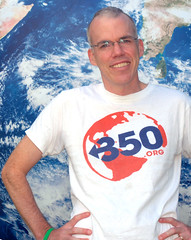Are you tired of the way your living room looks? Do you find yourself browsing through interior decorating magazines looking for ideas, only to be scared off by the prices for room re-dos? Do you yearn for a fresh new look for one of the most popular rooms in the house? If so, you are far from alone. Redecorating the living room is a common item on the household To-Do list. Fortunately, with a little time, creativity and a bit of money—but not too much—anyone can transform their drab and dull living room into a warm, environmentally friendly and inviting area the whole family will love.
Budget Decorating
One of the first things you should do when sprucing up your living room is determine what you want for the focal point. This can be the fireplace, a television set, or an attractive piece of artwork. Once you decide on the main feature of your room, set up conversation areas around it with furniture and other accessories.
Focal Point
Rearranging where and how your items are situated can make a huge impact on your room in very little time. Instead of putting everything against the walls, read up on furniture placement and put chairs and other items closer together so people can visit easily. If you can, try to have seating for at least six people in the living room. If you’re not sure how to stay environmentally aware while purchasing your focal point, you can buy antique chairs and tables; that’s an easy way to stay green.
Accents
Add an accent to the focal point; this could be an attractive vase filled with long-stem red roses, an interesting piece of sculpture, or a long painting behind the sofa. GreenYourDecor.com suggests you create your own arrangement to fit any them, color scheme or occasion and gives a step-by-step guide to creating your own. You can use anything fresh; from cranberries, to oranges, to lemons, you will have a more organic setting in your home.
If you feel your living room could stand to have a bit more color, but you are nervous about painting the entire thing a vivid shade of red, blue, orange or other bright color, consider an accent wall. A Houzz article features beautiful photos of accent walls in various colors. As a bonus, you don’t need a ton of paint or time to create an eye-catching wall that adds a definite touch of pizzazz to the room without feeling overwhelming.
Drapes
The style and color of drapes in your living room can really impact the overall feel of the room. In most cases, the drapes should match the largest piece of furniture in the space. Changing the window coverings can be a relatively inexpensive way to jazz up the living room and make it look newer and more contemporary. Use more natural, organic material. Stay away from big name brands that use dyes, synthetic polyesters and nylons and silk. And shop local; buy products manufactured within 500 miles or less.
Floors
The floors should be a bit darker than the walls. Achieving this can be done in a variety of ways; wooden floors could be stained in a darker tone, area rugs in deep colors could be placed over the carpet, or if you have it in your budget, you could re-carpet the area in a rich tone that complements the walls. HGTV.com suggests to use bamboo and eucalyptus because they grow quickly; they’re hard woods and are sustainable.









